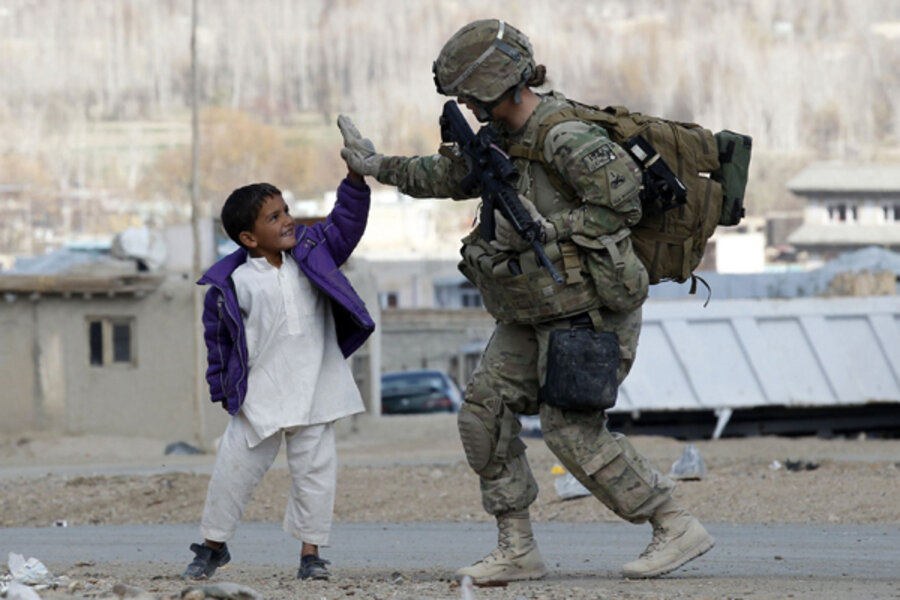Should the US adopt a 'Colombia standard' of success in Afghanistan?
Loading...
Michael O'Hanlon and Paul Wolfowitz argue that the US should strive for a "Colombia standard" of success in Afghanistan. They argue that though Colombia continues to have a conflict (in fact, a higher homicide rate than Afghanistan), its relative success in reducing the conflict, providing state presence in the population centers and having a fighting force capable of managing its own conflict should be seen as a model for "success" in Afghanistan.
They write:
While Colombians deserve most of the credit for success, they depended on a long-term U.S. commitment that was limited in scale but not in time.
I agree with that sentence, but not the rest of the paragraph.
I once wrote that Latin American analysts liked to refer to Plan Colombia not because of any specific details as much as it was "very big." That's true in terms of security assistance to the Western Hemisphere, where Plan Colombia was bigger and longer lasting than any other comparable initiative. The Merida Initiative in Mexico and the more recent CARSI and CBSI in Central America and the Caribbean are quite undersized compared to the scale of resources and commitment the US gave Colombia in the late 1990's and throughout the 00's.
That said, compared to Afghanistan or Iraq, Plan Colombia is peanuts. Over the past decade, there have been times the US has spent more in a day on its two wars than was spent in an entire year in Colombia. Additionally, Plan Colombia limited the number of troops and contractors in the country to less than 1,500 at any given time and the US was often well under the limits. Compare that to the 150,000 military personnel that were in Iraq at its peak or the about 90,000 that remain in Afghanistan today, and neither of those numbers include thousands of additional contractors.
Those limitations benefited Colombia. Having a smaller budget and a troop/contractor cap prevented the US from throwing excessive troops and resources at the problem, which often creates temporary success but also a level of dependency that make it hard to step away. The limitations on US assistance meant Colombia had to succeed on its own because the US was legislatively self-limited from imposing temporary "success" from the outside by ramping up troops or aid.
But here's the rest of the paragraph from O'Hanlon and Wolfowitz:
Afghanistan will need that even more. With a desperately poor economy (one-sixteenth the size of Colombia's), Afghanistan cannot sustain the army it needs without help. The country will need some $3 billion annually in foreign military assistance for an extended period after 2014, as well as a continuing military presence in the range of 10,000 U.S. and other NATO troops in a supporting role.
Look at those numbers. $3 billion in military assistance plus 10,000 troops (plus how many contractors?) on top of the money spent over the past decade. That's five to ten times the size of Plan Colombia in any given year. They are recommending a "post-war" spending package of more money on security aid in Afghanistan than the US spends in the entire Western Hemisphere today. They are recommending far more US troops deployed in Afghanistan than the US uses to train and support all the military and police in this hemisphere.
The military aid package suggested by O'Hanlon and Wolfowitz is only "limited" in comparison with the war-level spending in Afghanistan over the past decade. It is still far more costly than Plan Colombia, less likely to succeed, and without a plan to reduce that level to a more reasonable support package at any point in the future. In terms of Afghanistan, the right lessons from Plan Colombia are to look at the self-imposed limitations on aid, leaving the US in a supporting role while Colombia led the fight. Afghanistan is not going to lead on its own security if the US doesn't limit its own involvement.
Now go back to a fact I put in the first paragraph: Colombia still has a higher homicide rate than Afghanistan. So do the parts of Central America, the Caribbean and Mexico most heavily affected by the criminal groups.
Budgeting is about priorities. That $3 billion and 10,000 troop plan proposed by O'Hanlon and Wolfowitz can't be analyzed in a vacuum. Spending more on security in Afghanistan than we spend on all of Latin America and the Caribbean seems to me to be a poor use of limited resources moving forward. There is a need in this hemisphere, the money spent is more effective and the direct impact on US security and prosperity is likely greater. That's one more factor to consider as the US plans a more "limited scale" of aid to Afghanistan.
--- James Bosworth is a freelance writer and consultant who runs Bloggings by Boz.





